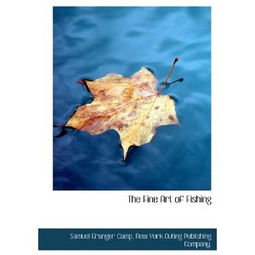Content:
As the leaves begin to turn and the air turns crisp, autumn ushers in one of the most rewarding seasons for fishing enthusiasts. The cooler temperatures and changing water conditions can present unique challenges, but with the right approach and some expert tips on bait preparation, you can enjoy a successful autumn fishing experience. Here's a comprehensive guide on how to prepare and use bait for autumn fishing.
Understanding Autumn Fishing Conditions
Autumn fishing is different from other seasons due to several factors:
Water Temperature: As the weather cools, water temperatures drop, which can significantly affect fish behavior. Most fish species slow down their metabolism and move to deeper waters to conserve energy.

Feeding Patterns: With the onset of winter, fish become more selective about their food sources. They'll often feed more heavily during the day to store fat for the colder months.
Location Changes: Fish may move to different areas in search of food and more comfortable temperatures. This can include moving to the deeper parts of a lake or river.
Choosing the Right Bait
The choice of bait in autumn can be crucial to your success. Here are some popular bait options and when to use them:
Live Bait: Live bait such as worms, minnows, and crayfish can be very effective. Live bait is especially appealing to fish that are in a feeding mode to build up fat reserves.
Artificial Lures: Artificial lures like spinners, crankbaits, and jigs can mimic the natural movements of prey and can be effective even when fish are less active.
Natural Baits: Natural baits like corn, grasshoppers, and leeches can be used when fish are more selective. These baits are less likely to be overlooked by cautious fish.
Preparing Your Bait
Properly preparing your bait can make a significant difference in your catch rate:
Live Bait: Keep live bait as lively as possible. Use a bait tank or a bucket with water to keep minnows and crayfish alive. For worms, keep them moist but not overly wet.
Artificial Lures: Maintain the integrity of your artificial lures by keeping them clean and free of rust or damage. Regularly check the hooks for sharpness and replace them if necessary.
Natural Baits: Prepare natural baits by ensuring they are fresh and appealing. For example, corn should be peeled to expose the sweet inner kernel, and grasshoppers should be gutted if possible.
Fishing Techniques
Once you have your bait ready, here are some fishing techniques to consider:
Timing: Fish more during the warmest part of the day when the water temperature is higher. Early morning and late afternoon can be especially productive.
Depth: Fish deeper during autumn to find the fish. Use a depth finder to locate the thermocline and adjust your fishing depth accordingly.
Patience: Autumn fishing can require more patience. Fish may be less active, so take your time and don't rush your casts.
Rigging: Use a heavy-duty rigging to handle the increased resistance from fish that are more likely to put up a fight in cooler water.
Adjustment: Be prepared to adjust your technique as the season progresses. Fish behavior can change rapidly with the weather.
Conclusion
Autumn fishing can be a challenging yet highly rewarding experience. By understanding the unique conditions of the season, choosing the right bait, and employing effective fishing techniques, you can maximize your chances of success. Remember to respect the natural environment and practice catch-and-release fishing where appropriate to ensure that future generations can enjoy autumn fishing as well. Happy fishing!












